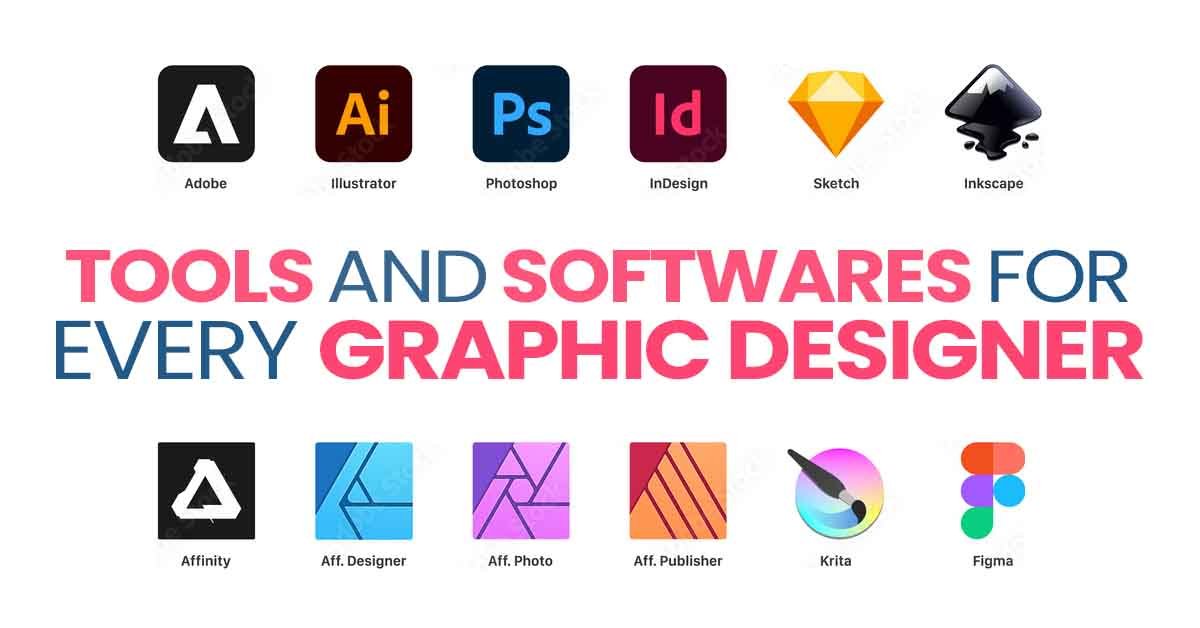In the world of graphic design, having the right tools and software can make all the difference. Whether you’re a seasoned professional or an aspiring designer, mastering essential graphic design tools is crucial for creating stunning visuals and staying competitive in the industry. This comprehensive guide highlights the must-know tools and software every graphic designer should be familiar with.
1. Adobe Creative Cloud Suite
The Adobe Creative Cloud Suite is the industry standard for graphic design. It includes a collection of powerful tools that cover all aspects of design work.
Adobe Photoshop
Adobe Photoshop is a versatile tool for photo editing, digital painting, and creating raster graphics. It’s ideal for tasks such as retouching images, creating website mockups, and designing graphics for social media.
Adobe Illustrator
Adobe Illustrator is the go-to software for creating vector graphics. It’s perfect for designing logos, icons, typography, and complex illustrations. Its scalability ensures that designs look crisp at any size.
Adobe InDesign
Adobe InDesign is essential for layout design and publishing. It’s used for creating brochures, magazines, posters, and other print materials. Its robust features make it easy to manage multi-page documents.
2. CorelDRAW Graphics Suite
CorelDRAW is a powerful alternative to Adobe Illustrator for vector graphic design. It offers intuitive tools for creating illustrations, page layouts, and photo editing. CorelDRAW is popular among designers for its user-friendly interface and extensive feature set.
3. Sketch
Sketch is a vector-based design tool primarily used for user interface (UI) and user experience (UX) design. It’s popular among web and mobile app designers for its simplicity, ease of use, and powerful features tailored for creating interactive prototypes and wireframes.
4. Figma
Figma is a web-based design tool that allows for real-time collaboration. It’s perfect for UI/UX designers working in teams, as it enables multiple users to work on a project simultaneously. Figma’s cloud-based nature makes it accessible from any device with an internet connection.
5. Affinity Designer
Affinity Designer is a cost-effective alternative to Adobe Illustrator. It offers advanced vector and raster design tools, making it suitable for a wide range of graphic design tasks. Affinity Designer is known for its speed, precision, and affordability.
6. Canva
Canva is an easy-to-use, web-based design tool suitable for both beginners and professionals. It offers a wide range of templates and design elements, making it perfect for creating social media graphics, presentations, and marketing materials quickly and efficiently.
7. Procreate
Procreate is a powerful drawing and painting app available on the iPad. It’s favored by illustrators and digital artists for its natural drawing experience, extensive brush library, and intuitive interface. Procreate is perfect for creating detailed artwork on the go.
8. InVision
InVision is a prototyping tool used to design interactive and animated user interfaces. It’s widely used by UX/UI designers to create clickable prototypes that mimic the look and feel of a final product. InVision also offers collaboration features, allowing designers to share and gather feedback on their work.
9. Blender
Blender is a free, open-source 3D creation suite that supports modeling, sculpting, animation, and rendering. It’s an essential tool for graphic designers interested in 3D graphics and animation. Blender’s extensive feature set and active community make it a valuable resource for learning and creating 3D content.
10. GIMP
GIMP (GNU Image Manipulation Program) is a free alternative to Adobe Photoshop. It’s a versatile tool for photo editing, image composition, and graphic design. GIMP is an excellent option for designers seeking a cost-effective solution for raster graphics editing.
Conclusion
Mastering these essential tools and software can significantly enhance your graphic design skills and efficiency. Whether you’re designing logos, creating digital art, or developing UI/UX prototypes, the right tools can help you bring your creative vision to life. Invest time in learning and exploring these tools to stay ahead in the ever-evolving field of graphic design.
By staying updated with the latest tools and software, graphic designers can ensure they are well-equipped to meet the demands of their clients and projects. Start exploring these essential tools today and elevate your design game to new heights.
